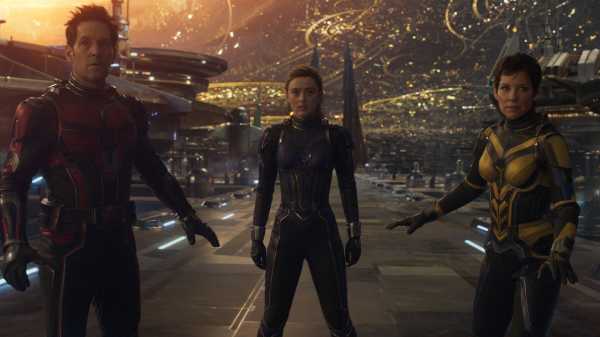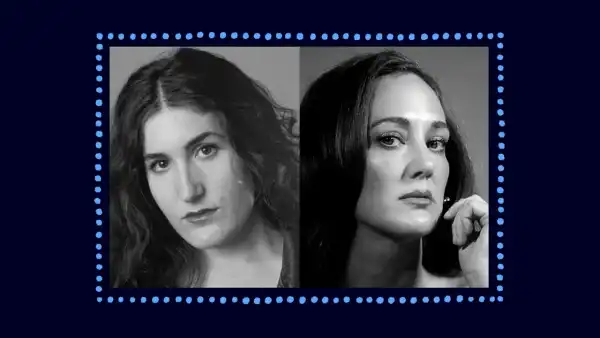
Just as the trouble with Bible-thumping is the thumping, not the Bible, the problem with superhero-franchise movies isn’t the source material but the uses to which it’s put. If some viewers and even some critics have given vent to feelings of superhero fatigue, it’s not only because of the sheer number of such movies. If they were more consistently good, they’d be more consistently welcomed. What’s fatiguing, in particular, is the formula—one of overproduced, corporate-dictated, eye-on-the-marketplace, focus-grouped, committee-created cinema. When the Marvel world was still being developed, many of the movies had the appealing overflow of loose ends, a delight in discovery unconstrained by formatting, because the program was yet to be figured out. Now the machine is humming, and it has been a while—specifically, since “Black Panther,” in 2018—since a Marvel movie has felt as if it wasn’t completely a package within a package, an unmitigated prefabrication.
Another earlier Marvel movie, the first “Ant-Man” film, from 2015, was a giddy delight. I don’t have factual knowledge of the creative leeway that the studio offered its director, Peyton Reed, but that filmmaker’s loopy humor and exquisite style were on display there. The second film in the cycle, “Ant-Man and the Wasp,” felt tethered—Reed unleashed intermittent flourishes of inspiration, but now they were completely bound by the M.C.U.’s gravitational field, pulled down to the franchise’s established map, and sent forth to do their duty.
The third film in the series, “Ant-Man and the Wasp: Quantumania,” which comes out Friday, reaches an appalling form of perfection. The story is a family affair, bringing together three generations. There’s Scott Lang, a.k.a. Ant-Man (Paul Rudd), and his partner, Hope van Dyne, known as the Wasp (Evangeline Lilly). There’s Hope’s father, Dr. Hank Pym (Michael Douglas), who devised the technology with which they shrink down to bug size yet exert colossal force; and Janet van Dyne (Michelle Pfeiffer), Hank’s wife and Hope’s mother (and the original Wasp), who was trapped for thirty years in the infinitesimal, subatomic Quantum Realm. Finally, there’s Scott’s teen-age daughter, Cassie (Kathryn Newton), a social activist and (following in Hank’s footsteps) a science prodigy, who invents a device to communicate with the Quantum Realm. But it turns out to have (pardon the pun) a bug, which causes all five family members to be zapped down into it, with no obvious means of returning.
That’s where the story—and the artistic trouble—begin. In the first two “Ant-Man” movies, the Quantum Realm, where characters shrink to subatomic size, is depicted as hallucinatory, lurid abstractions. (Or, as Scott says in the second film, it’s “really trippy.”) They get in, whizz through the colored lights and seemingly immaterial forms, and (fortunately) get out—one of the key maneuvers of the second film is Hank’s rescue of Janet from her thirty-year confinement. In “Quantumania,” the familial quintet is zapped back into the infinitesimal domain in which Janet somehow survived for three decades, but, instead of an amorphous mind bend of the vertiginous void, it’s now a world of its own, and it’s populated. (As one of the newly arrived fivesome exclaims, “There’s quantum people in the Quantum Realm.”) It’s not just humans but also a humanoid who can read minds (William Jackson Harper), plus vaguely human-shaped beings with glowing blue heads, others with green floret-topped heads that Hank likens to broccoli, lizardy hybrids, jellyfish-like floaters, gigantic flying stingrays, and buildings that are alive. There’s a variety of neighborhoods, cities, and regions, spread out over wide expanses and featuring a variety of landscapes, ranging from the gloomily barren to the hypertechnologically superurban.
The Quantum Realm turns out to be nothing more than inner space, the very small counterpart of a galaxy far, far away. Its modelling on the “Star Wars” template is made all too explicit by a scene (the liveliest in the film) that’s a parody of the celebrated cantina set piece. As in “Star Wars,” it’s the politics that drives the action: the Ant/Wasp five are menaced by a quantumaniacal tyrant called Kang the Conqueror (Jonathan Majors), who needs their technology to carry out his deranged scheme of destruction. (The MacGuffin is a “multiversal engine core” that Kang needs.) They also encounter the principled underground leader Jentorra (Katy M. O’Brian), who’s plotting a rebellion against Kang, and they become unwilling participants in the titanic clash that results.
The best thing about “Quantumania” is, surprisingly, its script (by Jeff Loveness), which is like saying that the best thing about a building is its blueprint. The story is unusually compact and logical, but it takes place in a factitious world so slight that it might as well be rendered on tracing paper. Though the Quantum Realm is a world of its own, the world-building is painfully flimsy, devoid of the history, the social organization, the environmental concepts, or the ins and outs of its material setup. It isn’t so much created as tossed off—the stentorian tirades and seething threats of its confrontations, the leaps and smashes and zaps of its fights, the blasts and roars and gyrations of its battles have all the weight and immediacy of index cards stuck onto A.I.-synthesized futuristic tropes.
It isn’t only the ways of life in the Quantum Realm that remain undeveloped; its physical setting is generic. Reed, the director, never gets to deploy his original and distinctive art of style. The hordes of visual-effects artists whose names roll by in the infinity credits are the veritable auteurs of the film, with no overarching sensibility to guide them. The movie is so dominated by its graphics that it plays like animation, but in reverse. Those techniques, instead of endowing the inanimate with life, subtract it from the film’s vital presences: its cast. The scant grounding and bare inner life of the characters give the remarkable actors little to work with. It’s a delight to hear the purpose and the spin that Pfeiffer and Douglas (and, in a cameo, Bill Murray) put on plain lines of dialogue; Majors brings Shakespearean thunder, and O’Brian’s blunt assertiveness offers a striking contrast. But even the grandest and most passionate moments are dramatically shrunk to what feel like clips of clips.
It’s sadly appropriate for the degree zero of superhero-franchise synthetics to have been reached, or asymptotically approximated, in the infinitesimal realm in which “Ant-Man and the Wasp: Quantumania” is set. Characters shrink to far smaller than human size (and even smaller than others at the quantum level). They grow far larger than their fellows in that microverse, yet such astonishing transformations have become routine in the superhero cinematic universe. That numbing burden of routine afflicts the production, the direction, and the over-all tone of this movie. The occasional spectacular idea—such as the weirdness unleashed when Scott is caught in a “probability storm”—gets submerged in a sludge of imagery that offers little but the concept itself, unmoored from its surroundings, its implications, and, above all, the perspective of the characters. What’s absent is a sense of experience—conveying to viewers the extraordinary and quasi-miraculous aspects of what the characters are undergoing, observing, and doing. The feeling of giddy wonder is what distinguishes the first two “Ant-Man” films; they help to restore the brand name of Marvel to a common noun and to a verb, and they do so starting from the top, with a sense of the filmmaker’s own experience—his ardent curiosity, free-ranging inventiveness, and imaginative sympathy. That creative subjectivity is the prime element that’s missing from the new movie. ♦
Sourse: newyorker.com






